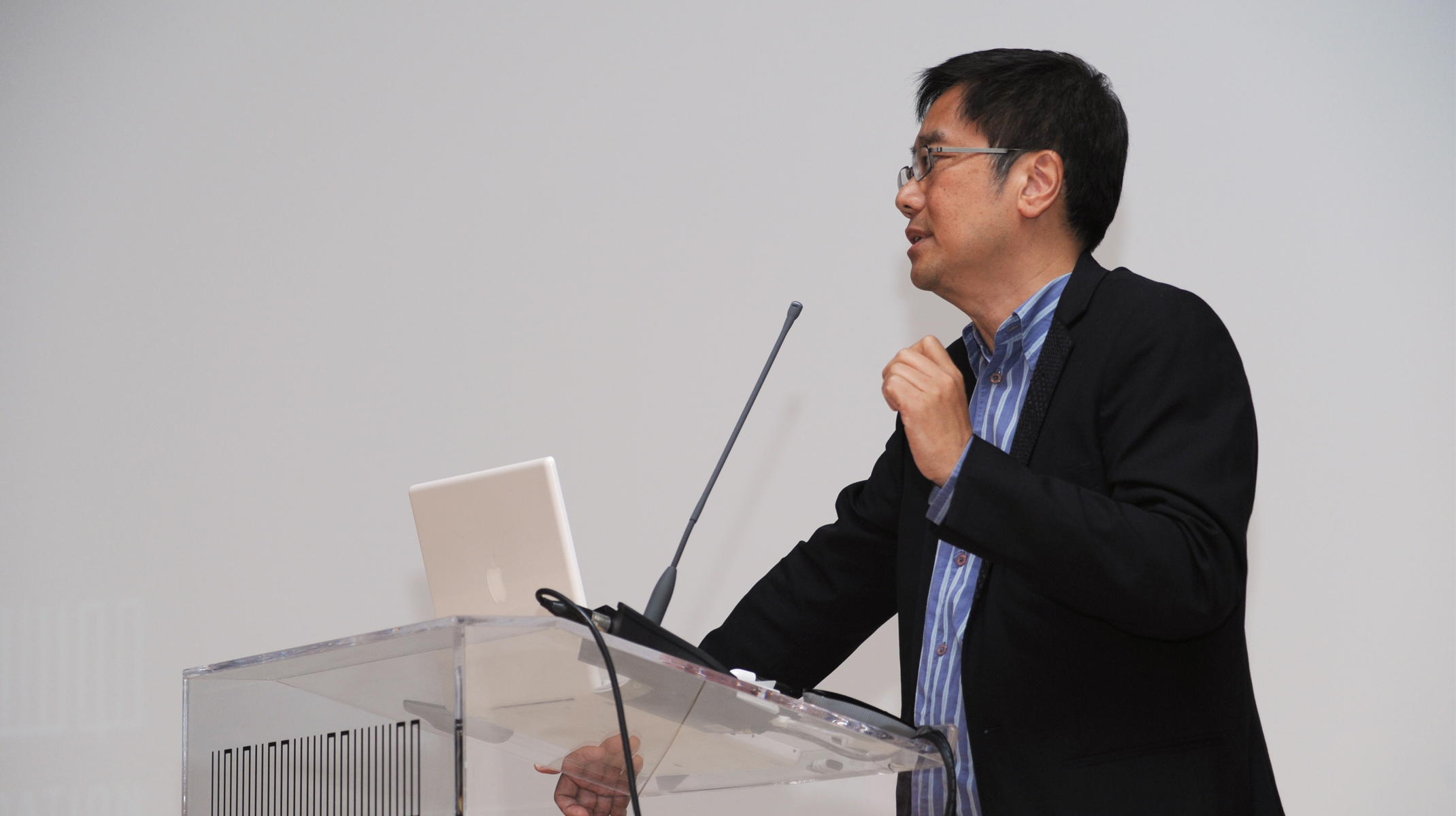Art Practices and Institutions: Languages, Processes and Exchange
March Meeting 2013
Art Practices and Institutions: Languages, Processes and Exchange
Kwok Kian Chow
Photo by Alfredo Rubio

search


—
March Meeting 2013
Art Practices and Institutions: Languages, Processes and Exchange
Kwok Kian Chow
Photo by Alfredo Rubio

In today’s increasingly globalised world the relationship between local and global or past and present is continuously redefined by people and ideas navigating multiple locations and contexts. This reality impacts on architectural and artistic practices given that artists, architects and institutions are frequently in the position of having to actualise concepts in new environments. How do artists, craftspeople, architects and institutions operate in relation to each other and their environments? What potentials can result when different knowledge perspectives are brought together with different types of practices?
Kwok Kian Chow is Founding Director of the Singapore Art Museum, as well as the National Art Gallery, Singapore, where he currently serves as Senior Advisor. Kwok is also the Deputy Chairman of the Yellow River Arts Centre, China - a space 80 hectare in size containing the Yinchuan Art Museum, Art History Park, Artist Village (international artist residency programme) and Sculpture Grounds. A museum and community development veteran, Kwok is also a scholar of museology, and Southeast Asian and Chinese contemporary art history. He has published extensively on these subjects. Kwok’s current research, writing and consultancy work is focused on museology and art history within a transnational context, looking at museum development models, curatorship, and museum activism as platforms for cultural development which can link local cultures and heritages with transnational and ‘global’ art forms and practices.
The Yellow River Arts Centre is set to become the largest and most important arts facility in Northwest China. It is situated along the banks of the Yellow River within Yinchuan, the capital of the Ningxia Hui Autonomous Region, and beside the northern route of the historic Silk Road. The Yellow River Arts Centre will serve as a meeting place for local and international audiences and arts communities to participate in the production, exhibition, discussion and research of contemporary culture in all its forms, and will reignite the rich cultural heritage of the region. The Centre’s international office is currently based in the Gillman Barracks arts cluster in Singapore, where the content of the Yellow River Arts Centre is being developed in preparation for its 2014 opening.
Bijoy Jain was born in Mumbai, India in 1965 and received his M. Arch from Washington University, St. Louis, USA in 1990. He worked in Los Angeles (USA) and London (UK) between 1989 and 1995 and returned to India in 1995 to found his practice – Studio Mumbai. It includes both architects and skilled craftsmen, who design and build projects together. Plans emerge through a process of collective dialogue, and are developed through careful consideration of place, environment, culture and the physical and emotional engagement of the people involved. Building techniques and materials draw on the ingenuity that comes from limited resources. Studio Mumbai has created buildings throughout India as well as in China and Chile. The studio has participated in exhibitions at venues including the National Museum of Modern Art, Tokyo, Japan (2012); Musée d’Art Contemporain de Lyon, France (2011); and the Victoria & Albert Museum, London, UK (2010), as well as appearing in the Venice Architecture Biennale, Italy, in 2010 and 2012. Studio Mumbai’s work has received several awards, including the Global Award for Sustainable Architecture (2009), the Spirit of Nature Wood Architecture Award, Finland (2012), and most recently the third BSI Swiss Architectural Award (2012).
Maj Hasager is a Danish artist currently based in Copenhagen, Denmark. She studied photography and fine art in Denmark, Sweden and the UK, earning an MFA from Malmö Art Academy, Sweden in 2008. Her work deals with power structures, identity, memory, the construction of history, and architecture, looking at how these interlinked phenomena are interpreted and represented culturally and spatially. Her artistic approach is research-based and interdisciplinary, and she works predominantly with text, sound, video and photography. She has exhibited her work internationally in events and institutions such as, Past Upon Past, Red Barn Photo Gallery, Belfast, Ireland (2013); Decembers, LAZNIA Centre for Contemporary Art, Gdan´sk, Poland (2012); Liverpool Biennial, UK (2010); Between Here and Somewhere Else, al-Hoash, al-Kahf gallery and Khalil Sakakini Cultural Center, Jerusalem, Bethlehem and Ramallah, Palestine (2010); The Other Shadow of the City, al-Hoash, Jerusalem (2009); Overgaden Institute of Contemporary Art, Copenhagen (2009); Guangzhou Triennial, China (2008); A Public Affair, Gallery 21, Malmö (2008); LOOP Film festival, Barcelona, Spain (2008); EMERGED Space, Glasgow, Scotland (2007); and KargART festival in Istanbul, Turkey (2007). She has been awarded grants in support of her work from the Danish Arts Council, The Danish Arts Foundation, Arab Fund for Arts and Culture (Beirut, Lebanon), ArtSchool Palestine, Danish Centre for Culture and Development and the Danish Arts Agency. She is the Programme Director of Critical and Pedagogical studies at Malmö Art Academy, and is a guest lecturer at the International Academy of Art – Palestine, Dar al-Kalima College, Bethlehem and University of Ulster, Belfast.